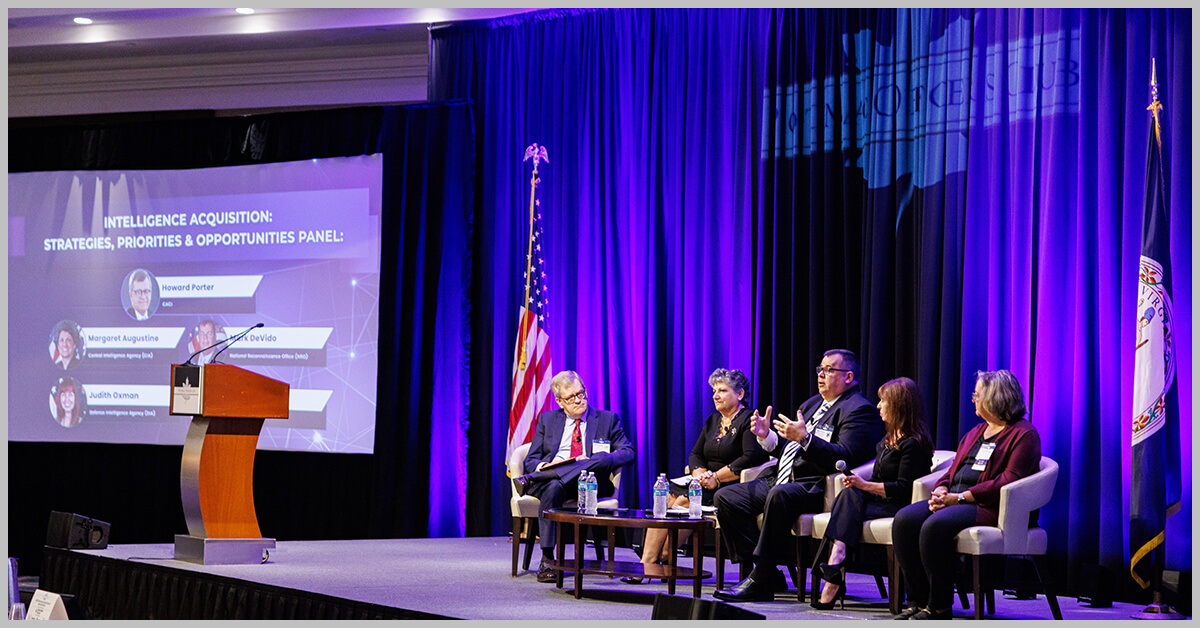Space is a rapidly evolving domain, and the federal government is looking to industry for modern technologies that could revolutionize related activities across the Department of Defense and Intelligence Community.
To cultivate these important partnerships, it is important to send out “the right market signal,” Devin Brande, director of the Commercial Operations Group within the National Geospatial-Intelligence Agency, said during a panel discussion at the Potomac Officers Club’s 2024 Space Summit on Tuesday.
Doing so requires looking ahead rather than waiting for years to confirm future budget details before key technologies are needed. Brande said that this means thinking about strategic approaches to using current funds to drive innovation, prepare existing capabilities for use and bridge the valley of death.
While funding is important, Peter Muend, director of the Commercial Systems Program Office within the National Reconnaissance Office, said that the flexibility and speed of acquisitions “comes back to the government architecture.”
“There is only so much you can do with the providers regardless of who holds the contract. The commercial provider has a certain capability and the ontology is what it is,” said Muend, who hopes providers are interested in helping to accelerate these processes.
The government, he said, needs to make sure that their architecture is malleable and that they are able to ask for things effectively and use requests as needed to prevent delays.


Col. Richard Kniseley, senior materiel leader for the Space Systems Command’s Commercial Space Office, emphasized that “you can’t just wait” to start contracting, and there are usually ways to work through slow processes, such as other transaction authorities.
Acquisition organizations are already exploring new ways to bring in new technologies.
Knisely shared that the SSC has successfully stood up a surveillance, reconnaissance and tracking-focused cell that has helped build out a commercial marketplace and successfully delivered more than 37 operational planning products. He cited work with illegal resource extraction and earthquakes as examples of areas in which these technologies have been used.
Through this program, he noted, the SSC has been able to offer these technologies to other service branches and allies.
“The great thing about commercial is that it’s shareable,” said Knisely.
Brande said that working with commercial entities allows the public sector to not just share capital but also exchange insights.
“Commercial has a diversity of thought that we really want to tap into, and they’re seeing the future,” he pointed out.
One element of acquisition that falls on industry, said COL Joseph O’Callaghan, chief of fires for the XVIII Airborne Corps within the U.S. Army, is thoughtful product development. He listed creativity, cooperative research design and searching for agreements organizations can form as parts of building something that is “meaningful and needed.”
As the influence of data increases and government organizations reshape their acquisition strategies to keep up with a fast-paced data sharing and decision making environment, industry should ensure that their products can handle today’s acquisition needs, Callaghan noted.
“The question is, how do you make your product relevant to those acquisition strategies that are being placed?” he said.


Check out the Potomac Officers Club’s next big event, the 5th Annual Artificial Intelligence Summit on March 21, to learn from public and private sector leaders who will discuss the ways AI is shaping the future of federal operations. Dr. William Streilein, chief technology officer of the DOD’s Chief Digital and AI Office, will deliver the opening keynote address. To learn more and register to attend the event, click here.








